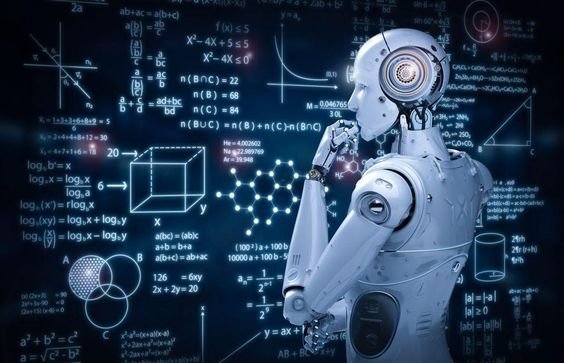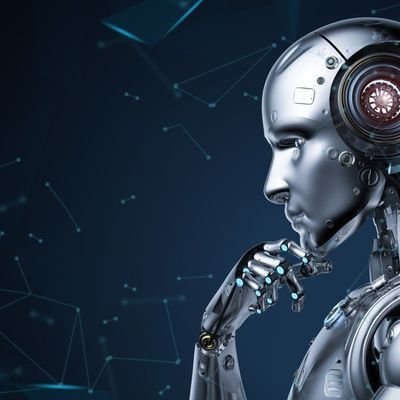
Robotics has rapidly evolved from a specialized field into a mainstream technology that is increasingly being integrated into various aspects of our lives. In education, robotics is poised to play a transformative role, reshaping how students learn and interact with the world around them. As technological advancements continue to accelerate, robotics in education will become more sophisticated, accessible, and impactful. This article explores the future of robotics in education, highlighting key trends, potential benefits, and the challenges that lie ahead.
The Current State of Robotics in Education
Robotics as a Learning Tool
In recent years, robotics has gained traction as an effective educational tool, particularly in STEM (Science, Technology, Engineering, and Mathematics) education. Robots are being used in classrooms to teach coding, problem-solving, and critical thinking skills. Educational robots, such as LEGO Mindstorms, VEX Robotics, and Bee-Bot, have become popular in schools, helping students of all ages engage with complex concepts in a hands-on, interactive way.
Robotics Competitions and Extracurricular Programs
Robotics competitions, such as FIRST Robotics, VEX Robotics Competitions, and RoboCup, have become increasingly popular, providing students with opportunities to apply their knowledge in real-world scenarios. These competitions encourage teamwork, innovation, and creativity, and they often inspire students to pursue careers in engineering, computer science, and other STEM fields.
The Role of Robotics in Special Education
Robotics is also making a significant impact in special education. Assistive robots are being used to support students with disabilities, helping them improve their social, cognitive, and motor skills. For example, robots like NAO and Kaspar have been used to help children with autism develop communication skills and social interactions.
Future Trends in Robotics in Education
1. Integration of AI and Robotics
Intelligent Tutoring Systems
One of the most promising trends in educational robotics is the integration of Artificial Intelligence (AI). AI-powered robots can serve as intelligent tutoring systems, providing personalized instruction and feedback to students. These robots can adapt to individual learning styles, track progress, and offer customized lessons, making education more tailored and effective.
For instance, AI-driven robots can analyze a student’s strengths and weaknesses and adjust the curriculum accordingly. This personalized approach can help students grasp difficult concepts more quickly and retain information longer.
Natural Language Processing and Communication
As AI and natural language processing (NLP) technologies improve, educational robots will become more capable of understanding and responding to human language. This development will enable robots to engage in more natural, conversational interactions with students, making them more effective as teaching assistants and companions.
In the future, robots could help students practice language skills, conduct research, and even engage in debates, enhancing their learning experience through dynamic, interactive dialogue.
2. Robotics in Early Childhood Education
Introducing Robotics at a Young Age
The future of robotics in education will see an increasing emphasis on introducing robotics to younger students, even in early childhood education. Educational robots designed for young children, such as Cubetto and KIBO, are already being used to teach basic coding and logical thinking skills in a playful, age-appropriate manner.
By introducing robotics at an early age, educators can foster a lifelong interest in STEM subjects and help students develop critical skills from a young age. This early exposure can also help bridge the gender gap in STEM fields by encouraging more girls to engage with technology and engineering concepts.
3. Robotics in Collaborative Learning
Promoting Teamwork and Collaboration
Robotics offers unique opportunities for collaborative learning, where students work together to solve problems and complete projects. In the future, robots will play a central role in fostering teamwork and collaboration in the classroom. By working on robotics projects, students can learn how to communicate effectively, share ideas, and manage tasks as a team.
Collaborative robotics projects can also help students develop soft skills, such as leadership, conflict resolution, and time management, which are essential for success in the modern workforce.
4. Robotics for Remote and Hybrid Learning
Expanding Access to Education
The COVID-19 pandemic accelerated the adoption of remote and hybrid learning models, and robotics will play a crucial role in supporting these models in the future. Telepresence robots, for example, allow students who are unable to attend school in person to participate in classroom activities remotely. These robots can move around the classroom, interact with peers and teachers, and provide a more immersive learning experience than traditional video conferencing tools.
In addition, robots can be used to deliver educational content in remote or underserved areas, expanding access to quality education for students who might otherwise be left behind.
5. Robotics in Vocational and Technical Education
Preparing Students for the Future Workforce
As automation and robotics continue to reshape the job market, there will be a growing demand for workers with technical skills in robotics and automation. Vocational and technical education programs will increasingly incorporate robotics into their curricula to prepare students for careers in these fields.
Students will learn how to design, program, and operate robots, gaining hands-on experience with the technologies that will drive the future of industry. This practical training will be essential for equipping the next generation of workers with the skills they need to succeed in a rapidly changing job market.
6. Robotics in Higher Education and Research
Advancing Research and Innovation
In higher education, robotics will play a key role in advancing research and innovation. Universities and research institutions will continue to use robots to explore new frontiers in fields such as artificial intelligence, biomechanics, and human-robot interaction. Robotics labs will become more prevalent, providing students and researchers with the tools they need to push the boundaries of what is possible.
In addition, robotics will be used to simulate real-world scenarios in fields such as medicine, engineering, and environmental science, allowing students to experiment and innovate in a safe, controlled environment.
7. Ethical Considerations and Responsible Use of Robotics
Teaching Ethics and Responsible AI
As robotics becomes more integrated into education, it will be essential to teach students about the ethical considerations and responsibilities associated with these technologies. This includes understanding the potential impact of automation on jobs, privacy concerns related to AI and robotics, and the importance of developing technologies that are fair and inclusive.
Educators will need to incorporate discussions about ethics and responsible AI into their curricula, helping students develop a critical understanding of the societal implications of robotics and automation.
8. Customizable and Adaptive Learning Environments
Personalizing the Learning Experience
The future of robotics in education will see the development of customizable and adaptive learning environments that cater to the unique needs of each student. Robots equipped with AI and machine learning algorithms will be able to assess a student’s learning style, preferences, and progress in real-time, adjusting the learning environment to optimize the educational experience.
For example, a robot might change the difficulty level of a task based on a student’s performance, provide additional resources or explanations for challenging concepts, or even adapt the physical environment (such as lighting or sound) to enhance focus and comfort.
9. Enhancing Creativity and Innovation
Robotics as a Tool for Creative Expression
Robotics is not just about technical skills; it also has the potential to enhance creativity and innovation in education. In the future, robots will be used as tools for creative expression, allowing students to design, build, and program their own robotic creations. This hands-on approach will encourage students to think creatively, explore new ideas, and develop innovative solutions to problems.
Educational robotics programs will increasingly focus on fostering creativity, whether through art, design, or engineering projects. By combining technical skills with creative thinking, students will be better prepared to tackle the challenges of the future.
Challenges and Considerations for the Future of Robotics in Education
1. Cost and Accessibility
One of the main challenges in implementing robotics in education is the cost of the technology. High-quality educational robots and the necessary infrastructure can be expensive, making it difficult for schools with limited budgets to adopt these tools. Ensuring that robotics education is accessible to all students, regardless of their socioeconomic background, will be a key challenge in the future.
To address this, there will need to be increased investment in educational technology, as well as the development of more affordable robotics solutions. Additionally, partnerships between schools, governments, and private companies can help make robotics more accessible to underserved communities.
2. Teacher Training and Professional Development
As robotics becomes more integrated into education, there will be a growing need for teacher training and professional development. Educators will need to be equipped with the knowledge and skills to effectively use robotics in the classroom and to integrate it into their teaching practices.
Ongoing professional development programs will be essential to help teachers stay updated on the latest advancements in robotics and to develop new pedagogical approaches that leverage the technology’s full potential.
3. Ensuring Inclusivity and Equity
It is crucial to ensure that the benefits of robotics in education are accessible to all students, including those with disabilities, from diverse backgrounds, and in underserved communities. Educational robotics programs must be designed to be inclusive, providing opportunities for all students to engage with the technology and develop their skills.
This includes designing robots that are accessible to students with physical disabilities, offering programs that encourage the participation of underrepresented groups in STEM, and ensuring that robotics education is available in schools across all regions.
4. Balancing Technology with Human Interaction
While robotics offers many benefits in education, it is essential to balance the use of technology with human interaction. Education is not just about acquiring technical skills; it is also about developing social and emotional skills, critical thinking, and ethical reasoning.
Educators must ensure that the use of robotics in the classroom complements, rather than replaces, traditional teaching methods. Human teachers will continue to play a vital role in guiding, mentoring, and supporting students as they navigate their educational journeys.
Conclusion
The future of robotics in education is filled with exciting possibilities. As technology continues to advance, robotics will become an increasingly integral part of the learning experience, offering new ways to engage students, personalize education, and prepare them for the challenges of the future. From AI-driven tutoring systems to collaborative learning environments, robotics has the potential to transform education in profound ways.
However, realizing this potential will require careful consideration of the challenges and ethical implications associated with the technology. By ensuring that robotics education is accessible, inclusive, and balanced with human interaction, educators can harness the power of robotics to create a brighter, more innovative future for students worldwide.









